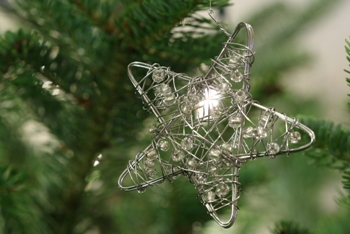Word of the Week - Archive page 4
Use the links below to navigate to the previous words of the week....
Words found on this page:
Platitudinous
This week's word is an adjective which is used to describe a trite/banal/overused statement or remark which is expressed as if it is original or significant. It is a similar word to cliché. A platitude is a statement with no meaning and derived from the Greek word for flat. Whether or not a statement is taken to be platitudinous is often a subjective decision. An example of a platitudinous statement could be, "You will succeed if you try hard enough" which ignores the fact that it is entirely possible to fail in spite of one's best efforts.
Synonyms of Platitudinous:
banal, bromidic, clichéd, commonplace, corny, hackneyed, musty, overused, overworked, platitudinal, shopworn, stale, stereotyped, stereotypic, stereotypical, threadbare, timeworn, tired, trite, warmed-over, well-worn, worn-out.
Quote of the week:
"Equality is a platitudinous concept that practically everybody supports because it can be given any meaning we like... Formal agreement on equality as a value masks the fact that we haven't a clue as to what is supposed to be equal to what, and in what way, or to what degree."
-- Phillip E. Johnson Professor of Law, emeritus School of Law ,University of California, Berkeley. Controversial author of "Darwin on Trial" and one of the founders of the 'intelligent design' movements.
back to top
Fulguration

This weeks word of the week, pronounced ful-gyoor-AY-shun comes from the Latin: from fulgurare "to flash with lightning". It can mean the act of lightning, and it is also a medical term for the destruction of tissue by a controlled electric current. It has been used in this way to treat all manner of complaints, from warts to cancer! In this context it is also known as electrocoagulation or electrocauterization. In Chemistry this word has also been used to describe the sudden brightening of a fused globule of
See below for links to some interesting facts about lightning!
En-Lightning Facts - Things you might not know about lightning!
Historical Lightning Facts - Find out how lightning influenced Roman politics and other cool facts.
Lightning never strikes twice, unless your name is Roy Sullivan.... - Read about the man who made it into the Guinness Book of World Records for being hit by lightning an amazing 7 times!
Quote of the Week:
"My eyes ranged far over a large space lit by a violent fulguration."
from 20,000 Leagues Under The Sea by Jules Verne.
En-Lightning Facts
Taken from Wikipedia
A bolt of lightning can reach temperatures approaching 28,000 kelvins (50,000 degrees Fahrenheit) in a split second. This is about five times hotter than the surface of the sun. The heat of lightning which strikes loose soil or sandy regions of the ground may fuse the soil or sand into glass channels called fulgurites. These are sometimes found under the sandy surfaces of beaches and golf courses, or in desert regions. Fulgurites are evidence that lightning spreads out into branching channels when it strikes the ground.
Fulgurites (from the Latin fulgur meaning thunderbolt) are natural hollow carrot-shaped glass tubes formed in quartzose sand or soil by lightning strikes. When lightning hits the ground, electrons flow outwards in all directions, sometimes heating the ground to around 1800 degrees. In the right kinds of sand this will form silica glass shapes that trace the path of the lightning through the sand. For this reason the structures are also known as Petrified Lightning. They are up to a couple of centimeters in diameter, and can be meters long if they are carefully excavated so as not to break the fragile structure. Their colour varies depending on the composition of the sand they formed in, ranging from black or tan to green or a translucent white. The interior is normally very smooth or lined with fine bubbles; the exterior is generally coated with rough sand particles. They are rootlike in appearance and often show branching or small holes. Fulgurites occasionally form as glazing on solid rocks, as well.
 Trees are frequent conductors of lightning to the ground (photo of a tree that has been struck by lightning). Since sap is a poor conductor, its electrical resistance causes it to be heated explosively into steam, which blows off the bark outside the lightning's path. In following seasons trees overgrow the damaged area and may cover it completely, leaving only a vertical scar. If the damage is severe, the tree may not be able to recover, and decay sets in, eventually killing the tree. Occasionally, a tree may explode completely. It is commonly thought that a tree standing alone is more frequently struck, though in some forested areas, lightning scars can be seen on almost every tree.
Trees are frequent conductors of lightning to the ground (photo of a tree that has been struck by lightning). Since sap is a poor conductor, its electrical resistance causes it to be heated explosively into steam, which blows off the bark outside the lightning's path. In following seasons trees overgrow the damaged area and may cover it completely, leaving only a vertical scar. If the damage is severe, the tree may not be able to recover, and decay sets in, eventually killing the tree. Occasionally, a tree may explode completely. It is commonly thought that a tree standing alone is more frequently struck, though in some forested areas, lightning scars can be seen on almost every tree.
back to top
Historical Lightning Facts
Taken from http://www.exploratorium.edu/ronh/weather/weather.html
"In ancient Rome, members of the College of Augurs divined the will of the gods by observing the southern sky for lightning, birds, and shooting stars. A lightning bolt passing from left to right was a favorable omen; a lightning bolt passing from right to left was a sign that Jove did not approve of current political events. Furthermore, whenever the augurs reported any sign of lightning, the magistrates of Rome were required to cancel all public assemblies on the following day. The augurs' reports became politically useful to postpone unwanted meetings, delay the passage of laws, or prevent the election of certain magistrates by popular assemblies. In medieval Europe and England, ringing the church bell could be a hazardous occupation. During thunderstorms, it was general practice to ring church bells violently in an effort to keep the lightning from striking the tall church spire. Some felt the clamor of the bells dispersed evil spirits that sought to destroy the church with fire; others claimed that the noise of the bells disrupted the lightning strokes. (The second reason explains the common inscription on medieval bells: Fulgura Frango. which means "I break up the lightning flashes."). During the years from 1753 to 1786, lightning struck 386 French church towers. Lightning running down the bell ropes killed 103 French bell ringers. In 1786, the French government finally outlawed the custom.
During the eighteenth century, church vaults were often used to store large quantities of gunpowder. The combination of a high steeple and explosive contents often proved dangerous. In 1769, a lightning bolt struck the tower of St. Nazaire in Brescia, where 100 tons of gunpowder were stored. The resulting explosion destroyed one-sixth of the city and killed 3000 people. Lightning-induced explosions of stored gunpowder continued through the 1800's. As late as 1856, lightning struck the church of St. Jean on the island of Rhodes, the powder stored in the vaults exploded, and 4000 were killed.
In 1753, Benjamin Franklin published a description of the first lightning rod in Poor Richard's Almanac. From that publication onward. many so-called Franklin rods were installed on buildings in the American colonies. In 1760, a Franklin rod saved a house in Philadelphia from damage from a direct lightning stroke. By 1764, the rods were quite common on houses and churches. The lightning rod was first used in England in 1760 on the Eddystone Lighthouse, a wooden structure that had been previously destroyed by lightning.
Despite the success of Franklin's device, some viewed it as a hazard, claiming that the pointed rods favored by Franklin actually attracted lightning strokes to a building. These scientists advocated blunt-ended lightning rods. which. they felt, would conduct away any lightning that did strike, yet would not attract lightning to the building.
The debate over pointed versus blunt rods became a question of politics, rather than science. King George III favored blunt-ended rods. identifying pointed rods with the rebellious American colonies. This political consideration caused the East India Company to remove the pointed rods from their powder magazines in Sumatra, one of which was subsequently destroyed by a lightning bolt."
back to top
Lightning Never Strikes Twice - Unless your name is Roy Sullivan....
Roy Cleveland Sullivan (1912-1983) was a U.S. forest ranger in Shenandoah National Park in Virginia. Sullivan was hit by lightning on seven different occasions and survived all of them. In his lifetime he gained "Human Lightning Rod" as a nickname.
The Seven Lightning Strikes of Roy Sullivan
- 1942 - Sullivan was hit for the first time when he was in a lookout tower. The lightning bolt struck him in a leg and he lost a nail on his big toe.
- 1969 - The second bolt hit him in his truck when he was driving on a mountain road. It knocked him unconscious and burned his eyebrows.
- 1970 - The third strike burned his left shoulder while in his front yard.
- 1972 - The next hit happened in a ranger station. The strike set his hair on fire. After that, he began to carry a pitcher of water with him.
- 1973 - A lightning bolt hit Sullivan on the head, blasted him out of his car, and again set his hair on fire.
- 1974 - Sullivan was struck by the sixth bolt in a campground, injuring his ankle.
- 1977 - The seventh and final lightning bolt hit him when he was fishing. Sullivan was hospitalized for burns in his chest and stomach.
Roy Sullivan shot himself on September 28, 1983, reputedly over a rejected love. Two of his ranger hats are on display at two Guinness World Exhibit Halls in New York City and South Carolina.
back to top
Merry Christmas!
 The HW WAF group would like to wish you all a very Merry Christmas and a Happy New Year!
The HW WAF group would like to wish you all a very Merry Christmas and a Happy New Year!
This weeks 'words of the week' are dedicated to the Christmas season. Here, in the traditional word of the week section, learn how to say Merry Christmas in over 100 languages, from Afrikaans to Yoruba! And in the Scots word of the week, learn about the most celebrated Scottish holiday - Hogmany!
How to say Merry Christmas around the globe!
Impress all your friends with your vast knowledge of foreign Christmas greetings. Approach tourists in the street and spread the joy by attempting to with them a merry Christmas in their native language. They may well laugh at you, but you might make some festive friends in the process.... Choose a language using the alphabet links below:
| A | B | C | D | E | F | G | H | I | J | K | L | M | N | O | P | R | S | T | U | V | W | Y |
A
Afrikaans: Gesëende Kersfees
Afrikander: Een Plesierige Kerfees
African/ Eritrean/ Tigrinja: Rehus-Beal-Ledeats
Albanian:Gezur Krislinjden
Arabic: Milad Majid
Argentine: Feliz Navidad
Armenian: Shenoraavor Nor Dari yev Pari Gaghand
Azeri: Tezze Iliniz Yahsi Olsun
back to menu
B
 Bahasa Malaysia: Selamat Hari Natal
Bahasa Malaysia: Selamat Hari Natal
Basque: Zorionak eta Urte Berri On!
Bengali: Shuvo Naba Barsha
Bohemian: Vesele Vanoce
Brazilian: Boas Festas e Feliz Ano Novo
Breton: Nedeleg laouen na bloavezh mat
Bulgarian: Tchestita Koleda; Tchestito Rojdestvo Hristovo
back to menu
C
Catalan: Bon Nadal i un Bon Any Nou!
Chile: Feliz Navidad
Chinese: (Cantonese) Gun Tso Sun Tan'Gung Haw Sun
Chinese: (Mandarin) Kung His Hsin Nien bing Chu Shen Tan
(Catonese) Gun Tso Sun Tan'Gung Haw Sun
Choctaw: Yukpa, Nitak Hollo Chito
Columbia: Feliz Navidad y Próspero Año Nuevo
Cornish: Nadelik looan na looan blethen noweth
Corsian: Pace e salute
Crazanian: Rot Yikji Dol La Roo
Cree: Mitho Makosi Kesikansi
Croatian: Sretan Bozic
Czech: Prejeme Vam Vesele Vanoce a stastny Novy Rok
back to menu
D
Danish: Glædelig Jul
Duri: Christmas-e- Shoma Mobarak
Dutch: Vrolijk Kerstfeest en een Gelukkig Nieuwjaar!
or Zalig Kerstfeast
back to menu
E
English: Merry Christmas
Eskimo: (inupik) Jutdlime pivdluarit ukiortame pivdluaritlo!
Esperanto: Gajan Kristnaskon
Estonian: Ruumsaid juulup|hi
back to menu
F
Faeroese: Gledhilig jol og eydnurikt nyggjar!
Farsi: Cristmas-e-shoma mobarak bashad
Finnish: Hyvaa joulua
Flemish: Zalig Kerstfeest en Gelukkig nieuw jaar
French: Joyeux Noel
Frisian: Noflike Krystdagen en in protte Lok en Seine yn it Nije Jier!
back to menu
G
Galician: Bo Nada
Gaelic: Nollaig chridheil agus Bliadhna mhath ùr! German: Froehliche Weihnachten
Greek: Kala Christouyenna!
back to menu
H
 Hausa: Barka da Kirsimatikuma Barka da Sabuwar Shekara!
Hausa: Barka da Kirsimatikuma Barka da Sabuwar Shekara!
Hawaiian: Mele Kalikimaka
Hebrew: Mo'adim Lesimkha. Chena tova
Hindi: Shub Naya Baras
Hausa: Barka da Kirsimatikuma Barka da Sabuwar Shekara!
Hawaian: Mele Kalikimaka ame Hauoli Makahiki Hou!
Hungarian: Kellemes Karacsonyi unnepeket
back to menu
I
Icelandic: Gledileg Jol
Indonesian: Selamat Hari Natal
Iraqi: Idah Saidan Wa Sanah Jadidah
Irish: Nollaig Shona Dhuit, or Nodlaig mhaith chugnat
Iroquois: Ojenyunyat Sungwiyadeson honungradon nagwutut. Ojenyunyat osrasay
Italian: Buone Feste Natalizie
back to menu
J
Japanese: Shinnen omedeto. Kurisumasu Omedeto
Jiberish: Mithag Crithagsigathmithags
back to menu
K
Korean: Sung Tan Chuk Ha
back to menu
L
Latin: Natale hilare et Annum Faustum!
Latvian: Prieci'gus Ziemsve'tkus un Laimi'gu Jauno Gadu!
Lausitzian:Wjesole hody a strowe nowe leto
Lettish: Priecigus Ziemassvetkus
Lithuanian: Linksmu Kaledu
Low Saxon: Heughliche Winachten un 'n moi Nijaar
back to menu
M
 Macedonian: Sreken Bozhik
Macedonian: Sreken Bozhik
Maltese: IL-Milied It-tajjeb
Manx: Nollick ghennal as blein vie noa
Maori: Meri Kirihimete
Marathi: Shub Naya Varsh
back to menu
N
Navajo: Merry Keshmish
Norwegian: God Jul, or Gledelig Jul
back to menu
O
Occitan: Pulit nadal e bona annado
back to menu
P
 Papiamento: Bon Pasco
Papiamento: Bon Pasco
Papua New Guinea: Bikpela hamamas blong dispela Krismas na Nupela yia i go long yu
Pennsylvania German: En frehlicher Grischtdaag un en hallich Nei Yaahr!
Peru: Feliz Navidad y un Venturoso Año Nuevo
Philipines: Maligayan Pasko!
Polish: Wesolych Swiat Bozego Narodzenia or Boze Narodzenie
Portuguese:Feliz Natal
Pushto: Christmas Aao Ne-way Kaal Mo Mobarak Sha
back to menu
R
 Rapa-Nui (Easter Island): Mata-Ki-Te-Rangi. Te-Pito-O-Te-Henua
Rapa-Nui (Easter Island): Mata-Ki-Te-Rangi. Te-Pito-O-Te-Henua
Rhetian: Bellas festas da nadal e bun onn
Romanche: (sursilvan dialect): Legreivlas fiastas da Nadal e bien niev onn!
Rumanian: Sarbatori vesele
Russian: Pozdrevlyayu s prazdnikom Rozhdestva is Novim Godom
back to menu
S
 Sami: Buorrit Juovllat
Sami: Buorrit Juovllat
Samoan: La Maunia Le Kilisimasi Ma Le Tausaga Fou
Sardinian: Bonu nadale e prosperu annu nou
Serbian: Hristos se rodi
Slovakian: Sretan Bozic or Vesele vianoce
Sami: Buorrit Juovllat
Samoan: La Maunia Le Kilisimasi Ma Le Tausaga Fou
Scots Gaelic: Nollaig chridheil huibh
Serb-Croatian: Sretam Bozic. Vesela Nova Godina
Serbian: Hristos se rodi. Singhalese: Subha nath thalak Vewa. Subha Aluth Awrudhak Vewa
Slovak: Vesele Vianoce. A stastlivy Novy Rok
Slovene: Vesele Bozicne. Screcno Novo Leto
Spanish: Feliz Navidad
Swedish: God Jul and (Och) Ett Gott Nytt År
back to menu
T
Tagalog: Maligayamg Pasko. Masaganang Bagong Taon
Tami: Nathar Puthu Varuda Valthukkal
Trukeese: (Micronesian) Neekiriisimas annim oo iyer seefe feyiyeech!
Thai: Sawadee Pee Mai
Turkish: Noeliniz Ve Yeni Yiliniz Kutlu Olsun
back to menu
U
Ukrainian: Srozhdestvom Kristovym
Urdu: Naya Saal Mubarak Ho
back to menu
V
Vietnamese: Chung Mung Giang Sinh
back to menu
W
Welsh: Nadolig Llawen
back to menu
Y
Yugoslavian: Cestitamo Bozic
Yoruba: E ku odun, e ku iye'dun!
back to menu
back to top
Snood
This week's word of the week has many meanings which include:
- A type of hood
- A moustache net for men with large moustaches to wear at night to keep their 'tash looking spiffy
- A puzzle game
- The flap of skin that hangs from a turkey's beak (humans can develop this abnormality too!)
The meaning that I am most familiar with is the first one. 'Snood' can be used to mean a sort of sack that is worn on the back of the head to keep long hair out of the way. A band covers the forehead or crown of the head, and this band holds the sack which holds the hair. This can be made of solid cloth or netting material. This sort or headgear was used as far back as the renaissance, it was popular during the second world war, and today is worn by married women in some sects of orthodox Judaism. Industries like catering where hygiene and safety are important are somewhere else you are likely to see a snood.
However, to you children of the 80's a 'Snood' is something quite different. I have fond memories of desperately wanting a Snood (and settling instead for a charming bright green balaclava with a plait around the top of the head). The Snood was a fashion trend of the 1980's (in the UK at least) and was a sort of combination of a scarf and hood in the form of a tube of woolen material placed over the head so that it gathers around the neck and is then pulled up over the top of the head to keep your head and ears warm. When researching this weeks word of the week I was happy to see that the Snood has not become extinct. In fact it seems that snoods have even become popular amongst canines - snoods are de rigueur in the Greyhound world for keeping out the winter chills.
For me the Snood represents a fundamental part of the 80's, along with Swatch watches, shell suits, gigantic hair bows, parachute pants and black lace gloves. It makes you wonder what fashionable items from today will be making us cringe tomorrow. My money is on the Poncho, that recent must have item to make us all look more like Pancho Villa except in skinny jeans and cowboy boots instead of a sombrero and a big moustache. Perhaps that will be what fashionistas will be sporting next season...in which case they should buy a snood to keep their moustache tidy overnight.
And finally...
Below we see that even ex-President George 'Dubya' Bush and Russian ex-President Vladimir Putin could not escape the Poncho craze.

Head Honchos in their Ponchos
back to top
Ineluctable
pronounced: in-ih-LUCK-tuh-buhl
This week's word, ineluctable, is an adjective which means impossible to avoid or evade. It can be used to describe anything which cannot be escaped or refused, or anything which is inevitable. It comes from the Latin word ineluctabilis, which itself is composed of in-, meaning "not" and eluctari, meaning "to struggle out of, to get free from".
A well known example can be found in "The Godfather", my favourite movie, when the Godfather says "I made him an offer he couldn't refuse" he might well have said "I made him an ineluctable offer" but then it probably wouldn't have ended up as one of the most memorable movie quotes of all time. For anyone that hasn't seen the film, the Godfather (played by Brando) asks a movie producer Jack Woltz that his favourite godson Johnny Fontane be given a part in an upcoming movie. The director refuses and says that he will not be intimidated. The next morning he wakes up to find the severed head of his prize racehorse Khartoum in his bed. When Johnny asks the Godfather how he got the director to change his mind, Brando replies "I made him an offer he couldn't refuse". For the movie buffs among you, here is a piece of Godfather trivia: During rehearsals, a false horse's head was used for the bedroom scene. For the actual shot, a real horse's head was used. The head was acquired from a dog-food factory.
Other examples of this week's word:
". . . ineluctable as gravity"
--Marilynne Robinson, The Death of Adam
"California's vision of itself as a car culture grew out of the impracticality of mass transit in reaching most of its scenic wonders, the innate restlessness of its inhabitants and the ineluctable attraction of an open road. "
--"From the Land of Private Freeways Comes Car Culture Shock," New York Times, October 16, 1997
"Linnaeus' classification scheme became popular not because it captured some ineluctable truth about nature. Rather, by the botanist's own admission, the system divided species based more on intuition than science, much as an art historian might group paintings into schools. "
--"Cultivating a New Tree," Los Angeles Times, September 25, 1999
back to top
Cynosure
This weeks word of the week, Cynosure, originates from the Greek Kynosoura and its general meaning is "The center of attention". However, giving it such a simple meaning loses much in the translation so here we will look at the origins of this word in a little more detail.
In ancient times navigators used the stars to guide their ships' passage through the oceans and in fact this art is still taught today although modern sat-nav has now taken over as the main method of naval navigation. Perhaps the most important star for navigation, certainly the one that most people have heard of, is the Pole Star. The Pole Star which goes by many names (Polaris, Lodestar, Alruccabah [Alruccaba], Cynosura , Phoenice, Tramontana, Angel Stern, Navigatoria, Star of Arcady , Yilduz, Mismar or Polyarnaya) is useful as it is the closest star to true north. Interestingly, by 350 BCE the Greeks were aware of the fact that Polaris does not mark the exact north pole. Due to the precession of the Earth's axes, Polaris will be closest to true North around 2100AD. It will then begin moving away from true North and in another 5000 years Alderamin will become the next North Star. In fact, the the time of the ancient Egyptians, Thuben was the North Star.
Polaris or, to give it its scientific name, Alpha Ursae Minoris is the last star in the constellation Ursa Minor (Little Bear). This constellation was known as "The Dog" to the Ancient Greeks and Kynosoura means "The dogs tail". This is the point where the translation does it little justice. To the Greeks, following this star was "Chasing the tail" which in their language had sexual connotations and was a bit of a bawdy sailor joke. From Kynosoura we get the English word "cynosure" which means "center of attention" but this should be applied for example to an attractive woman to give the idea that men are chasing after her just as the sailors chased the north star.
Other interesting facts about the North Star and Ursa Minor:
The Arabs refer to Polaris as Al Kiblah, meaning the star "least distant from the pole." According to their views, Polaris is an evil star. The story goes that Polaris slew the great warrior of the skies, whose coffin is outlined by the big dipper. All the other stars follow a never ending funeral precession mourning the loss of their great hero. It is Polaris, motionless and viewed as an outcast, who is kept at the coldest part of the sky.
Other ancient civilizations and their names for Polaris inclued: Turks - Yilduz, "the star par excellence;" Indians - Gradhahara, "the pivot of the planets;" and in Damasus - Mismar, "a needle."
Polaris is a yellow supergiant of spectral type F7 and an apparent brightness of 2.02m.
In earlier times, Ursa Minor was considered just to be seven close stars, and mythologically was regarded, as such, as sisters. In early Greek mythology, the seven stars in Ursa Minor were considered to be the Hesperides, daughters of Atlas. Together with other constellations in the zodiac sign of libra (i.e. Boötes, Ursa Major, and Draco) it may have formed the origin of the myth of the apples of the Hesperides, which forms part of The Twelve Labours of Herakles.
To many other cultures Ursa Minor was the Hole in which the earth's axle found its bearing. In Hindu mythology, the Pole Star is Dhruva (the word means pole today). Hindu texts say that Dhruva was the prince blessed to eternal existence and glory as the Pole Star (Dhruva Nakshatra in Sanskrit) by Lord Vishnu. The story of Dhruva's life is often told to Hindu children as an example for perseverance, devotion, steadfastness and fearlessness. India has constructed a nuclear reactor called Dhruva, designed to manufacture plutonium.
back to top
Pandiculate
Impress all your friends with this weeks word which describes something we all do, every day!
Pandiculation is the act of stretching and/or yawning. The person who pandiculates is a pandiculator. This word originates from the Latin pandiculari "to stretch one's self" from pandere "to spread out" + icul (diminutive element "a little").
There is a great deal of research on the subject of pandiculation to address questions such as , why do we yawn? Why is yawning contagious? Why does it feel so good to stretch when we wake up in the morning? Do animals share the same behavior?
To learn more about the science of pandiculation look no further! Read on, and out of interest try to keep count of the number of times you yawn while reading!
Interesting Pandiculation Facts:
- The average duration of a yawn is about 6 seconds.
- In humans, the earliest occurrence of a yawn happens at about 11 weeks after conception - that's BEFORE the baby is born!
- Yawns become contagious to people between the first and second years of life.
- A part of the brain that plays an important role in yawning is the hypothalamus. Research has shown that some neurotransmitters (for example, dopamine, excitatory amino acids, nitric oxide) and neuropeptides increase yawning if injected in the hypothalamus of animals.
" Pandiculation is the name given to an action pattern that occurs generally throughout the vertebrate kingdom. It is a sensory-motor action used by animals to arouse the voluntary cortex by making a strong voluntary muscle contraction in order to feed back an equally strong sensory stimulation to the motor neurons. It is a way of "waking up" the sensory-motor cortex.
When you see a dog or cat wake up, it will pandiculate; namely, it will strongly contract the large extensor muscles of the back that are essential for running. Then it may pandiculate in reverse, by contracting the anterior muscles into a flexed posture. Pandiculation prepares the animal for normal sensing and moving, readying its voluntary cortex for efficient functioning.
Birds pandiculate by lifting one wing in a backward direction while also extending the homolateral leg backward. A.F. Frasier, who is the acknowledged authority on this phenomenon, has verified that pandiculation occurs even in the foetal stage. Through fluoroscopic study of lamb foetuses, he has observed this event of cortical programming occur as an occasional extension of the limbs of the foetus.
Pandiculation occurs in human beings. Pregnant women report not only "kicking" of their foetus but also slow extension which distends their bellies. The fact that pandiculation occurs generally in vertebrate and mammalian animals, both prenatally and postnatally, indicates the phylogenetic depth of this ancient action pattern.
Upon awakening, human beings also pandiculate: they extend their backs, legs, arms, and jaws in a typical stretch. Young humans stretch their limbs in much the same way as other mammals. In every case, it is directly linked with awakening -- it is an ancient sensory-motor pattern of cortical arousal."
Taken from "Clinical Somatic Education: A New Discipline in the Field of Health Care" by by Thomas Hanna, Ph.D.
back to top
Just for fun
A little peek into the lighter side of life within the Heriot-Watt Waves & Fields group.
Word of the Week:
Gallivanting
Or: